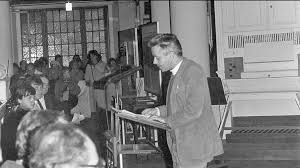That was an easy decision. Rome is where I was born and one of my favourite cities. I agreed without hesitation. On the other hand finding a time all three of us could make proved significantly more difficult. In the end, we settled on Monday 7 January. But, since my confidence in the ability of airlines to run to schedule is strictly limited, I decided to fly in the day before, 6 January, and told Paola so.
‘Ah,’ she replied, ‘will you be coming by broomstick?’
At first, the allusion struck me as obscure. Or possibly offensive. Was she referring to my age? To my looks? To my inclination to transform perfectly innocent people into field mice and feed them to the cat?
On the other hand, I get on well with Paola. Perhaps she meant it in a more complimentary way. Was she referring to my wisdom? My constant willingness to help out the virtuous needy? My ability to find a positive way through any dilemma, however difficult?
But then I remembered the Befana.
 |
| The Befana’s on her way. And so am I. Though probably by plane. And without the gifts |
The Befana shows up in time for Twelfth Night, on 6 January. Strictly speaking, that means she makes the trip on the 5th, but the kids enjoy the presents on the following day. Even so, it’s clear Paola was assimilating my arrival to the Befana’s.
That’s really quite flattering. It suggests my visit is welcome. Which is preferable to the alternative.
Interestingly, the myth says that one of the things the Befana does is sweep the floor before she heads off again. That may be a metaphor for clearing away all the problems and the bad events of the previous year, so that we can start the new one with a clean slate. Curious, isn’t it? Is that the source of the association of witches with broomsticks? Of course, generally we think of witches as travelling on their broomsticks, rather than using them to sweep stuff away.
It has to be said that the idea of brooms for sweeping, rather than flying, is at least rather more plausible. Though I’m not sure whether, in a story about witches, plausibility really comes into it.
In any case, and I hope this won’t come as a major disappointment to Paola, I’m not travelling by broomstick but by British Airways. My hope is that BA will make the trip less cold. Quicker and more reliable would be good too, but I don’t want to ask for too much.
The other thing is that I shan’t be bearing gifts. Just a presentation of a hospital information tool, which may be useful – I hope it will be – but rather lacks the allure of presents from a witch. And there’ll certainly be nothing there that’s good to eat.
Oh, well. It looks as though my friend Paola may have to swallow quite a bit of disappointment. I just hope she can take some comfort from the fact that I won’t, at least, be bringing her a lump of coal. Unless she decides that my presentation is worth no more than that.
Oh, the pressure, the pressure.






















